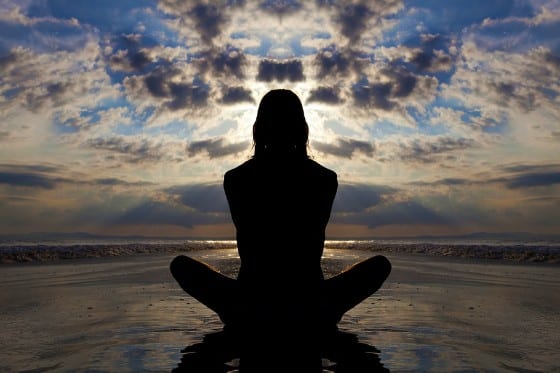Research demonstrates that meditation can provide significant benefits for our mental/emotional, physical, brain, and spiritual health. Regardless of which health condition you are facing, or if you are simply engaging in preventative measures, meditation should be a primary component of the healing plan. However, one of the challenges that many of my clients express to me when trying to adopt this practice on a regular basis is how to deal with restlessness, feeling antsy, or inability to sit still. Fortunately, we can use a simple mindfulness-based technique I will describe below to overcome these roadblocks with ease and reap the many rewards that meditation has to offer.
Although there are many different types of meditation, all of which can be beneficial for our health, I prefer mindfulness-based; largely because the fundamental principles that are inherent within this practice can help remove the barriers associated with restlessness, naturally through the basic process, with no added technique required. We will merely use the restlessness as the focal point of the meditation.
The essence of mindfulness is about focusing solely on what is occurring in the present moment without judgment. Being present and fully aware of that moment without judgment. This might be your surroundings, your thoughts, emotions, or physical sensations. For example, you can focus on your breath, a tree, the wind, your hand, food in your mouth, a ticking clock, anxiety, sadness, or pain in your back, to name just a few.
Here’s how you apply this concept to the feelings of restlessness.
- Stand, sit, or lie down in a quiet space.
- Close your eyes.
- Take in a long, slow and deep breath in through the nose and from the abdomen with your mouth closed, and then exhale in a slow and controlled manner through the nose. Repeat a couple of times until you begin to relax a bit.
- Now, go inward and locate the feelings of restlessness.
- Focus on nothing but the feeling of restlessness.
- Nothing else exists in this moment except your feelings of restlessness.
- Think of nothing. Just feel.
- Don’t label the restlessness as bad. Don’t judge it or try to get rid of it. Just let it exist in its entirety.
- Sit with it, embrace it, go into it. Become one with the restlessness.
- Stay completely focused on nothing but the feeling of restlessness.
In a short amount of time, you will begin to feel the restlessness melt away and dissipate. Then you may proceed with your meditation. If you begin to feel antsy at any time throughout your meditation, then just bring yourself back to those feelings and repeat the steps above. Alternatively, if the restlessness is persistent, then your entire meditation can consist of focusing on it the whole time.
It’s also important to be aware that meditation does not have to be lengthy to be of value. According to Dr. Dan Siegel, associate clinical professor of psychiatry at the UCLA school of medicine and author of The Mindful Brain, just three minutes of mindfulness meditation per day can be beneficial and repetition is more important than duration. Repetition will strengthen neural connections that will make it easier and quicker to achieve the goal next time and reinforce the benefits.
However, greater relaxation and other benefits can be achieved with longer sessions of 10, 20, or 30 minutes. So you can mix it up a little bit throughout your day by doing three minutes here and there when you are short on time, but try to fit in a longer session of 20 or 3 minutes daily as well, or at least most days of the week.
You can learn 15 quick and easy mindfulness-based techniques in my eBook, Meditating for Health, to get you started. Within the hour you can master the basic principles, which can help you instantly alleviate your stress, lower blood pressure, boost mood, promote relaxation, reduce pain, achieve more inner peace, and much more. You can also learn how to apply this concept to alleviating pain in my Mindfulness Over Chronic Pain book as well.


Restlessness is probably one of the biggest hurdles to overcome when first beginning a meditation practice. That, and “am i doing it right’. I’ve been meditating for over 17 years and have tried lots of different meditation styles over the years. Whenever someone that doesn’t meditate asks me what they should do to learn to meditate, I usually steer them toward mindfulness for the same reason that you mentioned, it has a structured and accessible approach to learning which is really helpful for those just starting out.